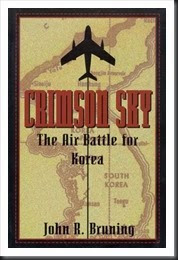 Well… if you’ve by judging the frequency of new posts on this blog came to the conclusion that wargaming hobby has fallen on hard times at Casa Marcus, you'd be absolutely correct. Between rather intensive period at work, summer vacation and rekindled interest in building airplane kits for the sake of pure pleasure, not much time is left over for painting minis or making terrain.
Well… if you’ve by judging the frequency of new posts on this blog came to the conclusion that wargaming hobby has fallen on hard times at Casa Marcus, you'd be absolutely correct. Between rather intensive period at work, summer vacation and rekindled interest in building airplane kits for the sake of pure pleasure, not much time is left over for painting minis or making terrain.
However, I am regarding current state as a temporary lull on the battlefield that most wargamers experience from time to time. The interest is still there and hardly a day passes by without me thinking about this or that wargaming project. Also, the hobby still dictates my choice of books I pick up from the shelf, which brings me to the real topic of this post.
During my vacation I had time to read 'Roman Conquests - Italy' by Ross Cowan. Early history of Rome has always fascinated me; after all, how the heck did they transform from a backwater village in the middle of nowhere into an empire spanning over three continents?
'Roman Conquests - Italy' won't give you the answer to this question, but it does provide a very nice albeit brief and compact introduction to the very earliest period in Roman road to the giant it eventually became. Its narrative spans from Celtic sack of Rome in 390BC to conquest of Calabria in 266BC. In a space of little more than 240 pages, author retells the story of almost petty squabbles between Rome and its immediate neighbour city-states, its slow expansion into central Italy, clashes with Etruscans and Celts in the north and monumental struggle against Samnites in the south. The story is rounded off with the story of Rome's encounter with Pyrrhus during the campaigns of conquest of Greco-Italian city-states in southern parts of Italian peninsula.
As already mentioned, this is a small book and out of necessity the writer confines himself to bare essentials in his narrative. Large sections of the book are almost lexicon-like and can feel like a long list of names of consuls for a given year and short description of the path they (probably) took in that particular annual excursion of the legions. Also, you won't find much information about the legions, strategy, tactics or soldiers who participated in that gigantic struggle; that information needs to be found in other places. Key events such as decisive battles or important political events are given more space, but don't expect detailed orders of battle, exciting battle descriptions or in depth analysis of political situations. Thus, it is safe to say that 'Roman Conquests; Italy' is a bit of a dry read.
Nonetheless, it is a fascinating little book that gives the reader a seed of an answer to the question how Rome became Rome. Out of the seemingly endless litany of yearly campaigns, battles lost and won, sieges that sometimes took a city and on other occasions ended in spectacular disasters for the Romans, treaties and alliances broken as often as they were held, one can clearly see the huge ambition, relentless drive and boundless aggression of both the individuals and the city itself. It also shows that Rome's ascendancy was far from certain and could indeed be regarded as a 'freak of nature'.
From historical wargamer's perspective this book is a bit of a mixed bag of goodies. It will not provide you with army lists or detailed orders of battle. Also, if you're unfamiliar with organization of early Roman legions or the opposition they faced during their initial expansion, you'll have to find that information somewhere else. However, it works very well as a sourcebook for scenarios and perhaps especially for that wargamer Holy Grail - the campaigns. Considering that the book is available for £5 in electronic format from Pen&Sword's website, it is really a bargain and if you've got even the slightest interest in this period, I'd say that picking up this book is a no-brainer.
 As stated at the beginning of this small volume (a tad over 200 pages), the air conflict in the skies of Korea isn't very well covered, especially when compared with WWII or Vietnam conflict. 'Crimson Sky' tries to remedy this situation in interesting fashion - author focuses on pilot's experiences in a number of detailed descriptions of missions typical to that conflict. These stories are put in proper context with help of a rather generic overview of the war as it developed between 1950 and 1953.
As stated at the beginning of this small volume (a tad over 200 pages), the air conflict in the skies of Korea isn't very well covered, especially when compared with WWII or Vietnam conflict. 'Crimson Sky' tries to remedy this situation in interesting fashion - author focuses on pilot's experiences in a number of detailed descriptions of missions typical to that conflict. These stories are put in proper context with help of a rather generic overview of the war as it developed between 1950 and 1953. 